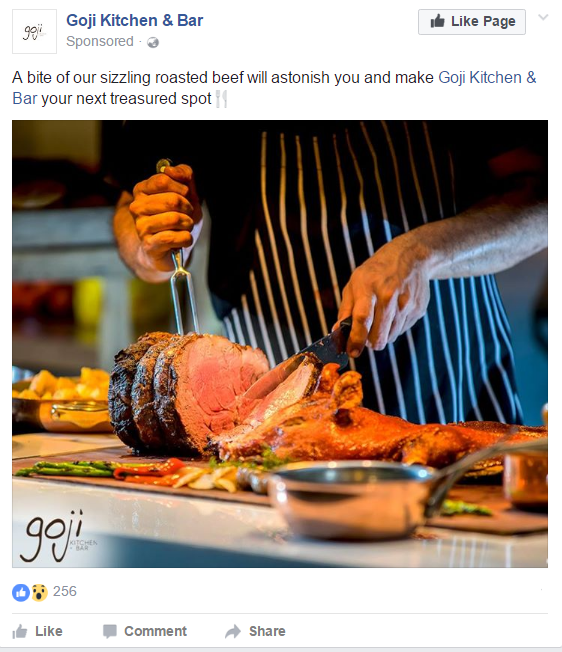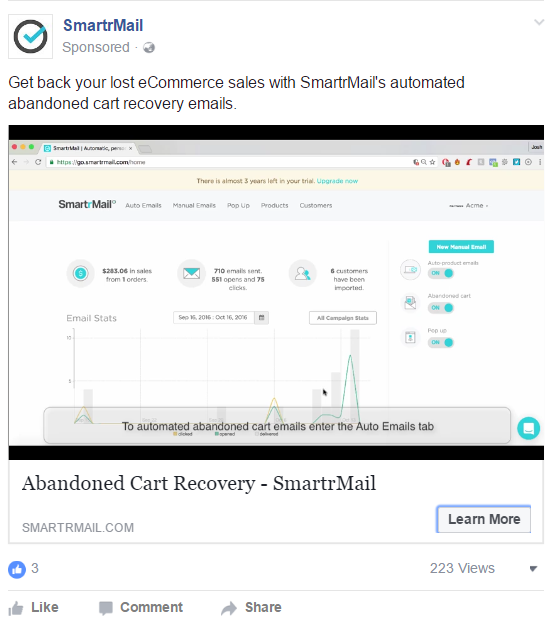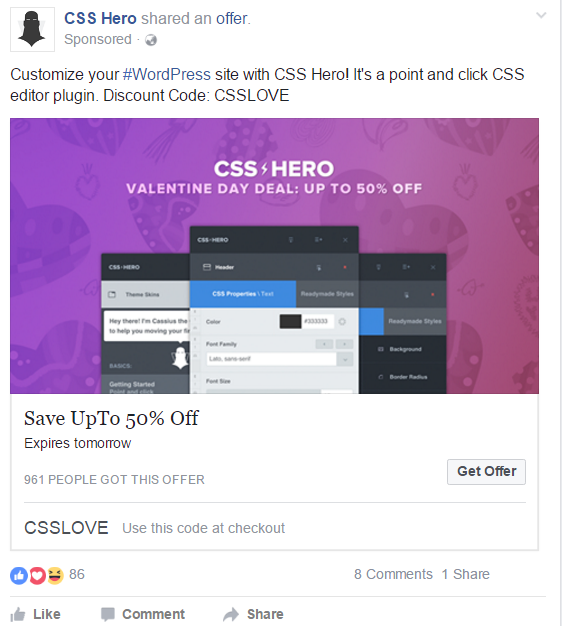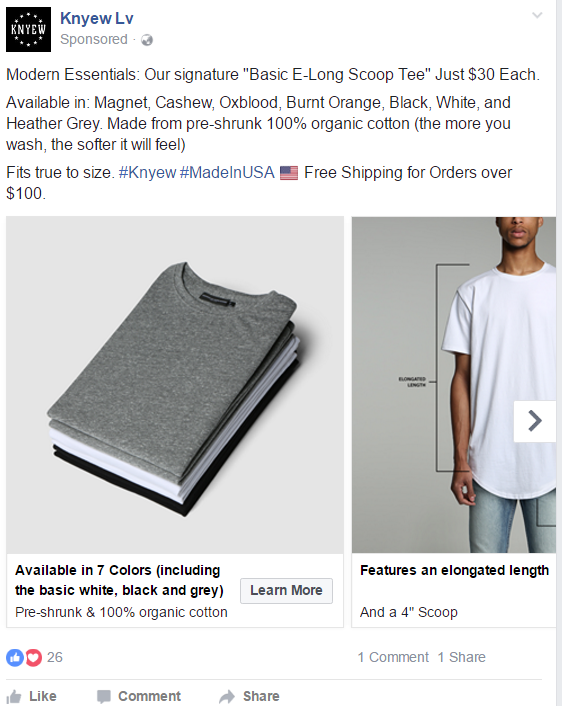You can target the right audience and use the right objective, placement, and bidding model, but if your message is wrong, your Facebook campaign will lose money.
If you’ve said or heard someone say, “Facebook isn’t profitable. It’s a waste of time,” then there’s a good chance that you (or they) got their messaging all wrong.
In this article, I will show you how to use the right messaging for your audiences by using real life examples.
Map out your customer journey
Before you run a Facebook campaign you need to map out your customer journey.
A customer journey is the steps a customer goes through when interacting with your business, from start to finish (awareness to purchase).
A typical customer journey on Facebook may look something like this:
1. Awareness – They see your Page on Facebook via an organic or promoted post.
2. Research – After the first interaction on Facebook, they visit your website, view your products, read your blog, and are shown more organic or paid ad content on Facebook. It’s here when you serve them a tailored offer.
3. Customers – After taking your offer, you continue to show them more products to increase their customer lifetime value.
4. Re-order/Refer a friend – They continue to order from your business, and may end up referring others.
Each step requires a different Facebook objective and message. You can’t serve someone at Step 1 a message you’re serving at Step 4, nor should you serve people at Step 4 a message shown to users at Step 1.
Here’s how you should be crafting your Facebook messages at every step of your funnel.
Awareness
You wouldn’t ask a girl or guy to marry you on the first date, so you shouldn’t ask people at the start of their customer journey to buy your product or service.
The awareness phase is a lot like a first date, where you both get to know each other. It’s at this stage where you let the customer know about your business, who you are, what you do, and what you offer.
To generate awareness you can use the following Facebook objectives:
- Brand awareness
- Local awareness
- Reach
- Engagement
- Video views
- Clicks to website
Remember, the goal here is to raise awareness, not to land a sale. If you’re using a ‘clicks to website’ objective, don’t send users to your product page; send them to an informative piece of content like a blog post or a video.
Here’s an example of Goji Kitchen & Bar using a page post engagement objective to reach more users:

They are not asking anyone to visit their restaurant or make a booking; they are simply generating awareness through a very cool image.
- Audiences to use: lookalike and interest targeting.
Research
If the user resonated with your awareness message, they may have visited your website and learned a little more about your product or service. They are now ready for your next message: a low-priced offer, a free trial, or a lead magnet depending on how you’ve set up your sales funnel.
SmartrMail use a video to retarget website visitors that leads them to a landing page offering a free 15-day trial of their service.

This message works because users are aware of SmartrMail (they are retargeting website visitors) and have qualified themselves as someone who may be interested in their service.
Here’s another example from CSS Hero who are giving me 50% off their product if I join:

Special offers, such as free trials or discounts, work well at this stage of the customer journey as it lowers the barrier of entry for new customers to try your service.
Ideal Facebook objectives to use at this stage are:
- website clicks;
- conversion;
- product catalog;
- lead generation; and
- video views.
- Audiences to use: custom audiences and custom page engagements.
Tip: You might want to test custom page engagement audiences at the research phase to see if running special offers are profitable. As users have not visited your website, they may still require more awareness messages first, such as a blog post or video.
Customers
Customers don’t need to be shown awareness videos or free trials because they have already made a transaction with your business. They should be shown more product items they can purchase. Unlike Step 2, you don’t need to show them offers or special deals all the time.
Here’s a dynamic product ad from KNYEW LV targeting people from their customer list:

A mistake brands make at this level is to continue to offer crazy discounts or offers that aren’t needed when targeting paid customers.
Facebook objectives to use include:
- conversions;
- product catalog; and
- website clicks.
- Audiences to use: customer list and custom audiences that belong to a conversion.
Refer a friend
In an ideal world, the last step of your sales funnel is your customer telling their friends about your business. You can do this on Facebook by letting your customer list know about the benefits of inviting friends and how they will both get a reward for doing so.
Just be careful when running refer-a-friend campaigns; you should not get your customers to tag their friends in the post. This is known as like/tag gating and is against the Facebook ads policy.
Referring a friend via Facebook should be supplemented with email marketing, as you can create pre-configured codes that your customers can simply forward to friends.
- Audiences to use: customer list.
Summary
Are you trying to offer free trials or drive sales to people in the awareness stage? Or perhaps you’re showing your customers too many special deals, free trials, and offers that you’re devaluing your brand.
There are many stages in your customer journey, and each step requires a unique message to push customers on to the next step.
Do you have campaigns set up with tailored messaging at each stage of your Facebook funnel?